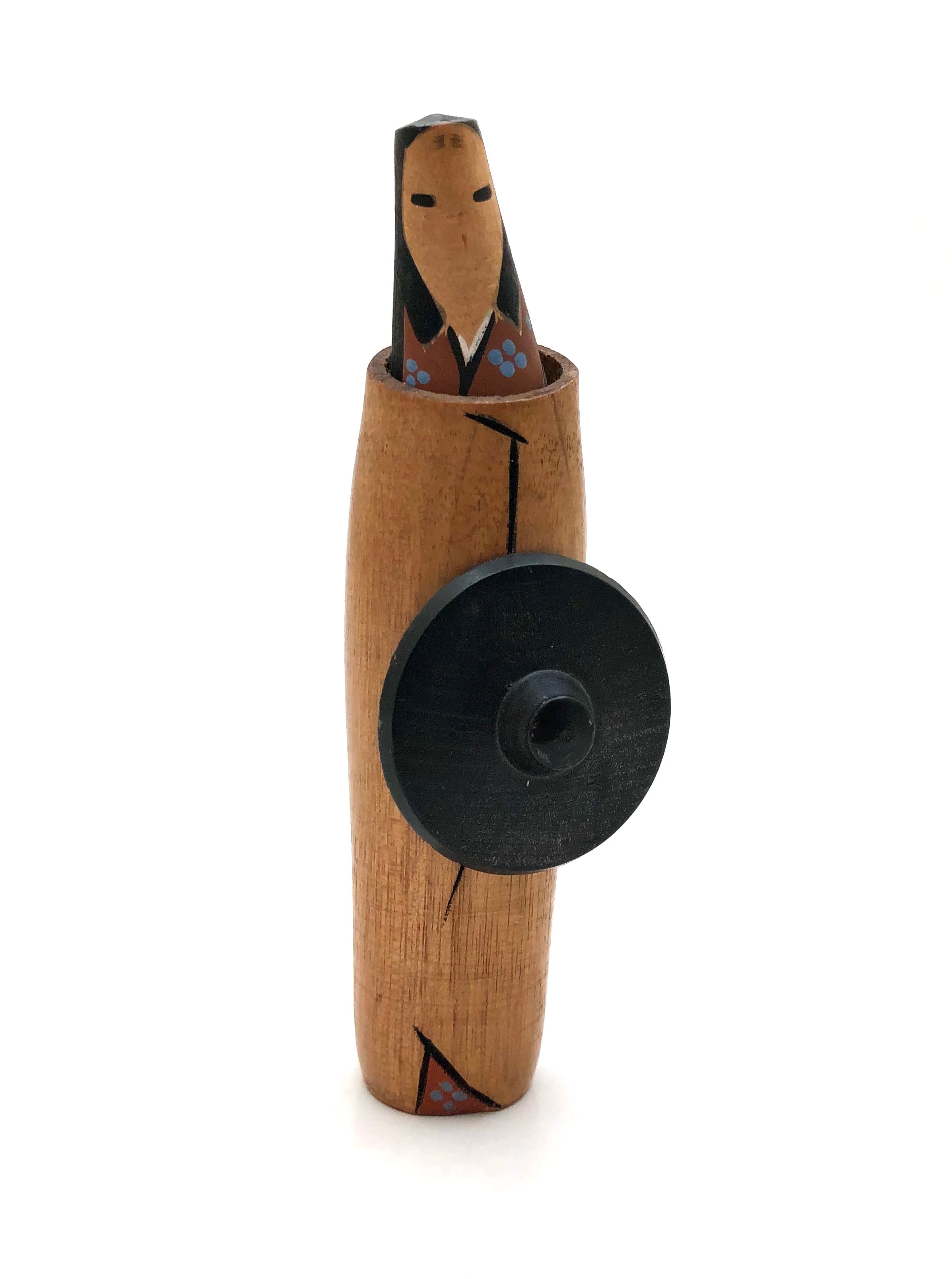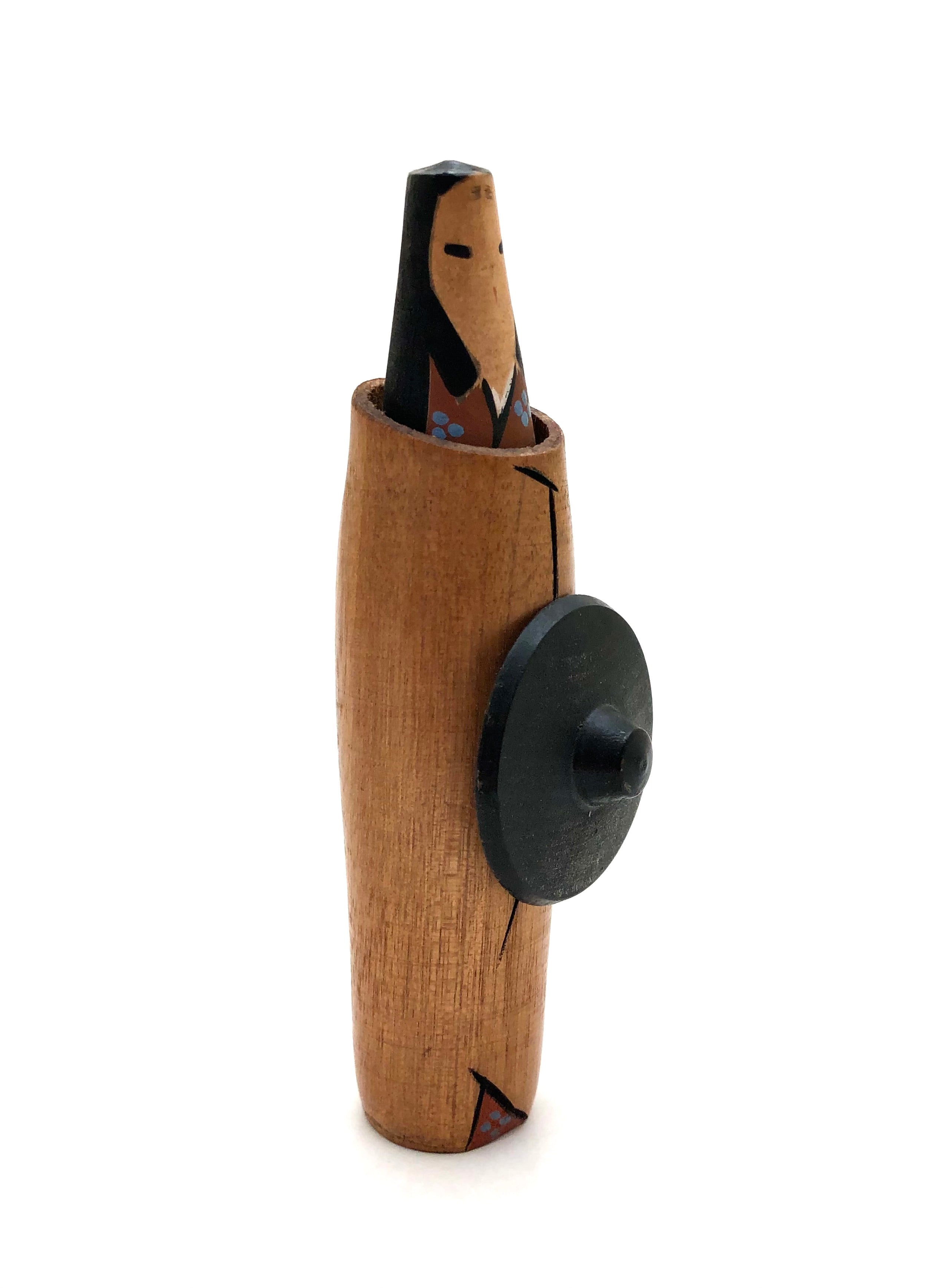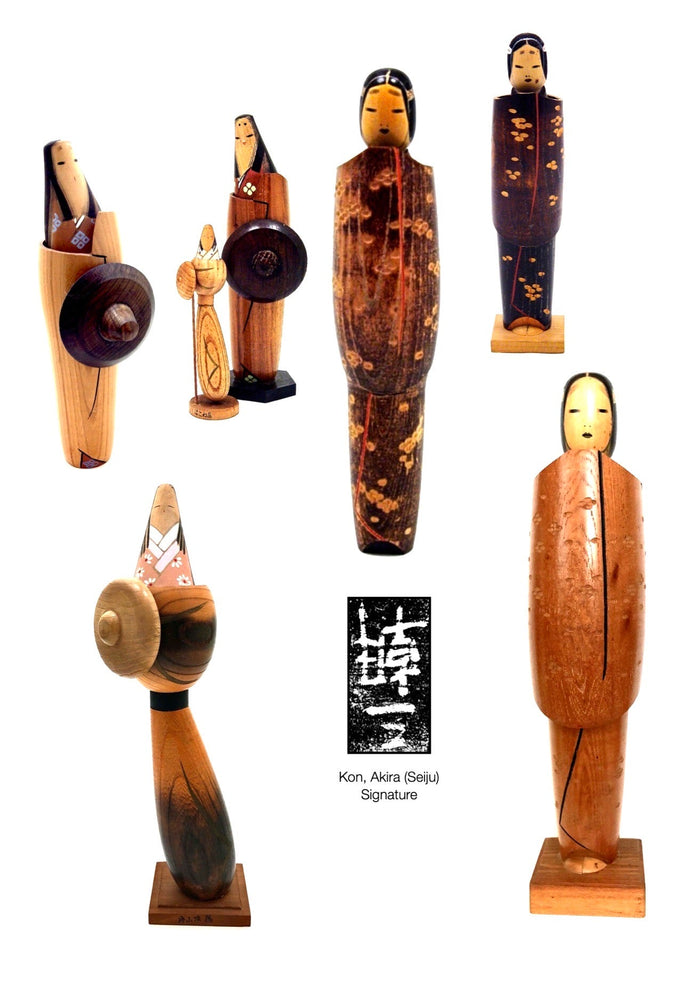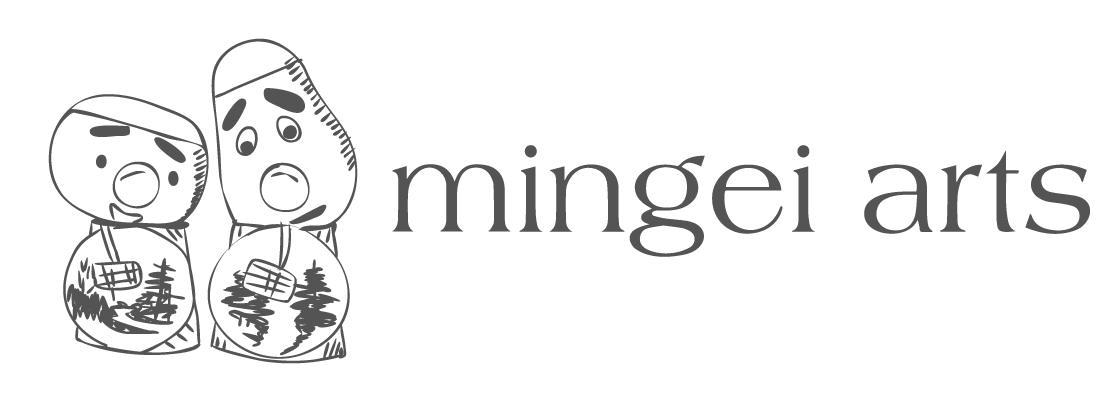

Vintage Sosaku Kokeshi entitled: “Oshinobi dochu | Traveling Incognito” by Kon, Akira (Seiju)
Dimensions: 5-1/2”h
Kon-san is only one of three other artists, (Ryoichi, Kato, and Hiroshi) who also made interpretations of this stylized Heian noblewomen. Women from families of high rank enjoyed a certain aspect of freedom during the period. These privileged women were well educated in music, poetry, art, fashion, and calligraphy, all part of a Heian woman's education, which gave them more freedom than the general female population.
He beautifully details this miniature doll incorporating his style of elongated face, and wonderfully long hair, similar to hair worn during the Heian period, defined as flowing hair. Women’s foreheads were emphasized with two black marks referred to as Bindi decoration, (traditionally, the area between the eyebrows) is said to be the sixth chakra, ajna, the seat of "concealed wisdom”, and is said to retain energy and strengthen concentration. Additionally, elongated foreheads are prized by the Japanese representing beauty, elegance, and fashion. As seen in the upper portion of this figure is a layered Kimono ornamented with white flowers showing under clothing worn for travel: an oversized hat and a belted, heavy garment to ward off the chill, represented here by a minimally decorated pear wood, (Nashi). The piece is unsigned but definitely one of his varying-size pieces of this style.
Condition: Excellent and beautiful examples and conditions affording each doll age-old elegance. Retains the original craft/workmanship showing a wonderfully-developed patina and commensurate with age and unrestored. Each piece meets all the standards of Traditional Kokeshi collectibles and is an exceptional piece for the collectors of Sosaku artist dolls.

Artisan
Woodworker: Kon, Akira (Seiju)
1931-
Biographical History:
Seiju studied under Master Hasegawa, Tatsuo, and his designs are based on the Tsugaru-style kokeshi, where his pieces were sold at the Owani Spa, Aomori. Little is known about this artist, other than he is from the Yamagata area, a major Kokeshi-making city/prefecture. ‘Noh’ theatre, of course, along with Kabuki, is Japan’s great gift to the Western world which he honors in his creations and originated at religious festivals in the first half of the fourteenth century. Kon-san is famous for his depiction of a ‘Noh Dancer’ seen in three of the images, and he captured the highly stylized masked actor at his commanding and mysterious best.
Additionally shown are stylized versions of Heian noblewomen who represented families of high rank, and was one of his favorite subjects. Women enjoyed a certain aspect of freedom during this period and were well-educated in music, poetry, art, fashion, and calligraphy, which were a part of a woman's education during this time.
Collector's note – descriptive qualities, standard characteristics & ornamentation styles:
His figures perfectly depict emotions conveyed by wonderfully stylized faces, gestures, and classical garments. Kon-san’s Noh figures are elaborate, multi-layered works of art that convey a character's identity and enhance the performance. Unusual for Kokeshi and never seen on historically pure Kokeshi, but here the artist adds tabi-covered feet to the large piece which stands on a dais. He set the standard for this type of doll which several of his contemporaries copied. All of his noblewomen traveling in incognito, (Oshinobi Dochi), wore multi-layered garments, large overcoats if they wore outerwear, and carried a “Higonokami” knife in their sleeves for protection, and would wear large hats because of privacy concerns. He employed different woods, particularly Japanese cypress, (Hinoki), Pouloownia, and Cherry wood, and after detailing the doll gave pattern and depth to the garment. All of his dolls were stained with natural pigments.
Explore & Learn More about Woodworker: Kon, Akira (Seiju)